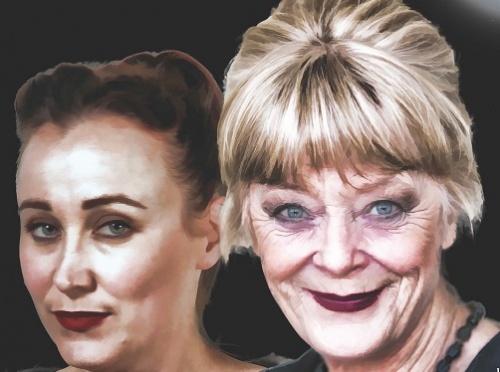MOON AT THE BOTTOM OF THE GARDEN
Dunedin Public Art Gallery, Dunedin
10/10/2014 - 19/10/2014
Production Details
WORLD PREMIERE
Edinburgh Fringe Award winning Dunedin playwright Sarah McDougall takes an element of New Zealand’s social history, the 1955 ‘jukebox murder’, and weaves an intriguing intergenerational story around the fictional Rosie, the widgie at the heart of the killing.
For sixty years Rosie’s secrets and guilt reverberate down the generations in a haunting, humorous, time-blended journey. Repetition reigns, a consequence sparked by the death of two ‘bodgies’; one murdered and the other hanged for the crime.
DUNEDIN PUBLIC ART GALLERY
30 The Octagon
Performance dates are:
FRI 10 & SAT 11 OCT, 8pm
SUN 12 & TUE 14 OCT, 4pm
WED 15 OCT, 8pm
THU 16 OCT, 1pm & 8pm
FRI 17 OCT, 8pm
SAT 18 OCT, 4pm
SUN 19 OCT, 8pm
Tickets $35/$25 from Ticketdirect www.regenttheatre.co.nz,
Service fees will apply.
Or cash sales from Dunedin Public Art Gallery.
More information can be found on our new website www.moonproductions.co.nz where there is also a link to our fb page moonatthebottomofthegarden.
Actors: Amy Abbott, Clare Adams, Cheyl Amos, Rosella Hart and Irene Wood.
Set Design: Paul McCaffrey
Lighting Design: Stephan Killroy
Intriguing play with an incredibly strong cast
Review by Kimberley Buchan 11th Oct 2014
While standing by a jukebox in 1955, a 20 year old bodgie named Albert (Paddy) Black stabbed the 19 year old Alan Jacques (known as Johnny McBride), apparently in a disagreement over a girl. This crime and the lifestyle of the teen bodgies and widgies were held up as justification for the hysteria that the Mazengarb report had whipped up the year before. Albert Black was executed for his actions later that year.
Playwright Sarah McDougall has seized upon the girl at the centre of this bloody dispute and has taken this silent pawn and put her at the heart of a passionate dynasty. There are five generations in this family struggling with cycles of blame and addiction. Rose keeps secret her involvement in the events of 1955 and torments herself for them.
The weight of the family’s hurt and secrets drags each person to terrible places yet they manage to bring themselves together for the tradition of a family mah jongg game. The game forms the centre point that holds the characters and the play, which travels backwards and forwards in time, together.
Rose is played by Irene Wood and Amy Abbot. The past and present versions of Rose work together seamlessly. The past Rose hovers behind the present Rose, interjects with superb timing and harangues her future self. The two characters are similar enough to be believably the same but different enough to show how much the present Rose has grown and changed from all her experience. Past Rose shows her immaturity in her reactions as the play unfolds and raises the question; would we want our 16 year old self’s opinion of how our life turned out?
Rose’s daughter Dawn is played by Cheryl Amos, who has quite the set of lungs on her. Dawn is brash and hotheaded. The moment where we see her at work in the nursing home is a nice change for her angsty character and allows more empathy for her. She is constantly at odds with her own daughter, Rata, played by Clare Adams. Rata is the family success story, surviving her addictions and helping others as a counsellor.
Rosella Hart is Lilly, Rata’s daughter. She is still caught in the throes of her addiction and trying to get her daughter Jasmine back from CYFs care. Lilly is manipulative and desperate and delivers quite a fantastic drug laden rant about how she would run the world. Hart shows her versatility in also playing the irrepressible Suzie, widgie Rose’s best friend.
The audience, although often craning their necks, are absorbed in this cyclical story. The tension in the audience is palpable during Lilly’s blood soaked climax.
McDougall handles the topics of murder, prostitution and addiction without being at all judgemental. With the exception of the ‘she’s just like me’ moment, there are .some delightfully subtle elements in Moon at the Bottom of the Garden, like the use of lighting – designed by Stephan Killroy and Troy Naumoff – to create a fairly literal foreshadowing, and other method of showing how the past impacts on the present
Julie Edwards has directed an intriguing play with an incredibly strong cast. A must see in this year’s Dunedin Arts Festival.
Copyright © in the review belongs to the reviewer







Comments